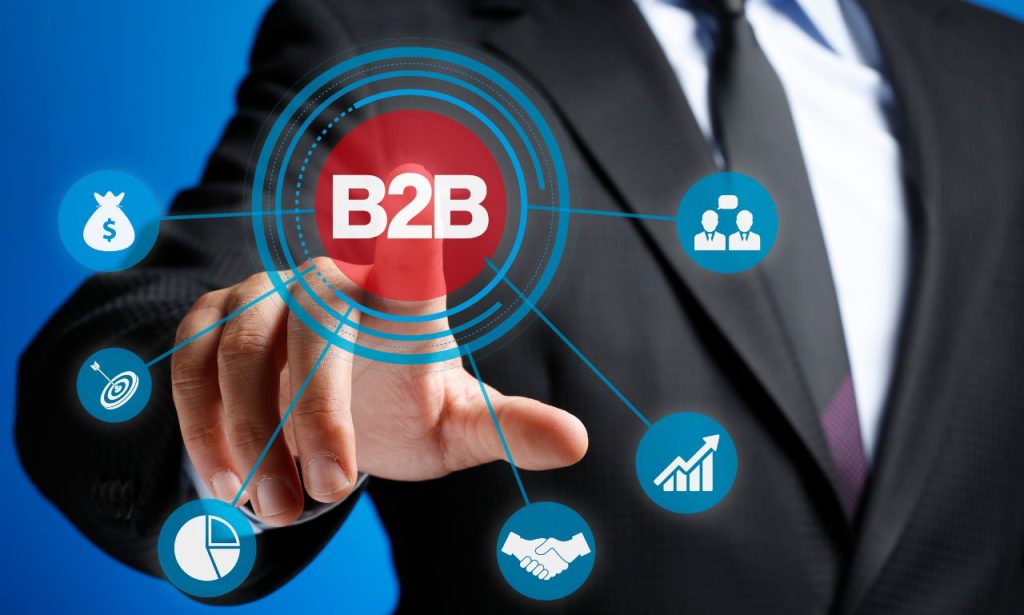Have you ever wondered why some B2B e-commerce websites convert like crazy while others struggle to keep visitors on the page? The answer isn’t magic—it’s in the features. Today’s B2B buyers expect the same seamless experience from B2C platforms but with specialized tools that address their unique needs. I’ve spent years analyzing what makes B2B websites perform, and I will share the exact features that separate the winners from the losers. Let’s break down the must-have features to transform your B2B e-commerce website from an online catalog into a conversion machine.
Navigation might seem basic, but it’s where most B2B websites fail spectacularly. Your customers aren’t browsing for fun—they’re busy professionals trying to complete tasks efficiently. A well-designed navigation structure can reduce bounce rates by up to 40% and increase time on site by 25%.
The best B2B navigation systems follow the “three-click rule.” Any product or information should be accessible within three clicks from your homepage. This requires careful planning and organization of your product catalog. Category pages should be logically arranged according to how customers think about your products, not how your internal teams classify them.
Mega menus work exceptionally well for complex B2B catalogs, allowing visitors to view multiple category levels at once. Berlin Packaging does this brilliantly, organizing thousands of products into intuitive categories that match purchasers’ thinking. Remember that your navigation isn’t just about organizing products—it’s about creating pathways that guide users toward conversion.
Advanced Search Functionality

Your customers often know exactly what they want, sometimes down to specific part numbers or technical specifications. Advanced search functionality is no longer optional—it’s expected.
Smart search capabilities should include filters for multiple attributes (size, material, compatibility), autocomplete suggestions, and the ability to search by part numbers or SKUs. The search function should forgive typos and understand industry terminology. When implemented correctly, advanced search can increase conversion rates for returning customers by up to 50%.
The most effective B2B search tools also incorporate machine learning to improve results over time, prioritizing frequently purchased items and adapting to user behavior. This personalization makes the shopping experience feel tailored to each customer, significantly increasing customer satisfaction and loyalty. Your search function should work like a knowledgeable sales rep who instantly knows what the customer wants, even when they don’t use the exact terminology.
Mobile Optimization
I constantly hear the myth that “my customers don’t use mobile for B2B purchases.” The data tells a different story: 70% of B2B decision-makers use mobile devices at some point in their purchasing journey. Even if the final order happens on a desktop, the research often starts on mobile.
Mobile optimization goes beyond responsive design. It means creating touch-friendly interfaces with appropriately sized buttons, streamlined forms that don’t frustrate users on smaller screens, and fast-loading pages. Google’s PageSpeed Insights should become your best friend—mobile load times directly impact user experience and search engine ranking.
The mobile experience should focus on the most common tasks B2B buyers perform: quick reorders, checking product specifications, and tracking orders. Making these functions easily accessible on mobile can dramatically increase customer satisfaction. Remember that a frustrated mobile user today is likely to switch to a competitor’s better-optimized site tomorrow.
Detailed Product Information
B2B purchases typically involve higher stakes than consumer shopping. A wrong purchase can disrupt supply chains or production schedules. That’s why comprehensive product information isn’t just helpful—it’s critical to converting cautious B2B buyers.
Every product listing should include complete technical specifications, compatibility information, bulk pricing tiers, minimum order quantities, and lead times. High-quality images from multiple angles, technical drawings, and, when appropriate, 360-degree views can reduce uncertainty and prevent returns. Video demonstrations provide authentic insights for complex products that static images cannot.
Customer reviews add another layer of credibility, especially from similar industries or applications. Including case studies directly on product pages can showcase real-world applications and results. The goal is to answer every possible question before it’s asked, removing barriers to purchase and reducing the need for customers to contact your sales team with basic questions.
Flexible Payment Options
B2B payment processes are typically more complex than swiping a credit card. Offering flexible payment options can be the difference between closing a sale and losing a customer to a more accommodating competitor.
Your e-commerce site should support traditional payment methods like credit cards and digital wallets and B2B-specific options, such as purchase orders, credit terms, scheduled payments, and electronic fund transfers. Many successful B2B platforms offer customer-specific pricing and payment terms based on negotiated contracts.
Payment processing systems should integrate seamlessly with your customers’ procurement processes. This might include supporting PunchOut catalogs that connect directly to their purchasing systems or providing detailed electronic invoices that match their accounting requirements. The easier you make it for customers to pay according to their established processes, the more likely they are to complete purchases and return for future orders.
Bulk Ordering
Efficiency is everything in B2B purchasing. Your website should make ordering multiple items as frictionless as possible through bulk ordering features that save time and reduce errors.
Effective bulk ordering tools include CSV uploads, which allow customers to import large orders from their internal systems; quick-order forms, where multiple items can be added simultaneously; and reorder functionality, which lets customers duplicate previous purchases with a single click. These features can reduce order time by up to 80% compared to adding items individually.
The best B2B platforms also offer inventory management tools that help customers track their usage patterns and automatically suggest reorder points. This proactive approach turns your website into an indispensable business tool rather than just a transaction platform. When customers rely on your site to help manage their inventory, you’ve created a powerful switching barrier that competitors will struggle to overcome.
Request a Quote Feature
Not every B2B transaction has a straightforward price tag. Custom orders, volume discounts, and special requirements often require personalized quotes. A robust Request a Quote (RFQ) feature bridges the gap between self-service e-commerce and customized sales.
Your RFQ functionality should allow customers to select products, specify quantities and requirements, and submit everything for a custom quote. The system should automatically route these requests to the appropriate sales team member and provide customers with estimated response times. Integration with your CRM ensures that no opportunities fall through the cracks.
This feature satisfies traditional buyers who prefer human interaction and modern purchasers who value online convenience. The data captured through quote requests also provides valuable insights into customer needs and pricing sensitivity that can inform your product development and marketing strategies.
Self-Service Access Accounts
B2B relationships aren’t one-size-fits-all, and your account features shouldn’t be either. Self-service access accounts empower customers to manage their own experience while providing you with critical data on customer behavior.
Robust account features should include order history with easy reordering, saved shopping carts for complex or recurring purchases, and address books for multiple shipping locations. Role-based permissions are significant for B2B, allowing companies to control which employees can place orders, request quotes, or browse products.
The most effective B2B platforms also provide account dashboards with purchasing analytics that help customers track their spending patterns and identify cost-saving opportunities. This value-added feature positions your website as a business intelligence tool rather than just a purchasing channel. When customers gain insights from your platform that help them run their business better, they’re unlikely to switch to competitors.
Volume Purchase and Bulk Discounts
Transparent, easy-to-understand volume pricing is a cornerstone of successful B2B e-commerce. Your website should communicate cost advantages for larger purchases, encouraging customers to increase their order size.
Dynamic pricing displays show that per-unit cost decreases as quantities increase, which can remarkably effectively drive larger orders. Some B2B sites take this further with tiered pricing structures visible directly on product pages, clearly showing the threshold for each discount level. This transparency eliminates the need for customers to contact sales representatives to understand pricing.
The most sophisticated B2B platforms incorporate personalized pricing tiers based on each customer’s negotiated terms. When combined with real-time inventory visibility, this customization creates a highly customized shopping experience that matches or exceeds what customers receive through traditional sales channels.
How Can I Improve My B2B Website?

Improving your B2B website isn’t a one-time project—it’s an ongoing testing, learning, and refining process. Start by analyzing your current performance metrics. Which pages have high bounce rates? Where do customers abandon their carts? These data points highlight your most urgent improvement opportunities.
Next, talk to your actual customers. User testing sessions with your key accounts can reveal pain points that analytics might miss. Ask them to complete everyday tasks on your site while narrating their thoughts. Their frustrations will point directly to your following improvement priorities.
Remember that B2B e-commerce excellence requires cross-departmental collaboration. Your sales team brings invaluable insights into customer questions and objections. Customer service knows the most common post-purchase issues. IT understands technical constraints and opportunities. Combining these perspectives creates a website that truly serves your customers’ needs.
Conclusion
Your B2B e-commerce website isn’t just a digital storefront—it’s potentially your most efficient salesperson, working 24/7 without complaints or commissions. The features we’ve explored aren’t merely nice-to-haves; they’re expectations in today’s competitive B2B marketplace.
Implementation doesn’t have to happen all at once. Start with the features that address your most significant pain points or opportunities. Each improvement will generate data that guides your next steps, creating a virtuous cycle of enhancement and results.
Remember that behind every B2B transaction is a human looking for efficiency, reliability, and value. The technical features matter only insofar as they deliver these fundamental benefits. When your website truly understands and serves the needs of B2B buyers, conversion rates, average order values, and customer loyalty will naturally follow.
ALSO READ:
FAQs
While all features matter, advanced search functionality often delivers the highest ROI because it directly impacts how easily customers can find exactly what they’re looking for.
Implementation costs vary widely based on your existing platform and specific requirements. Many modern B2B e-commerce platforms offer out-of-the-box features, making them more accessible than custom development.
The core features apply broadly, but their implementation should be tailored to your specific industry, products, and customer needs. A chemical supplier would prioritize features differently than an office supply company.
A phased approach is usually more effective. It allows you to measure the impact of each change and gather user feedback before proceeding to the next improvement.



